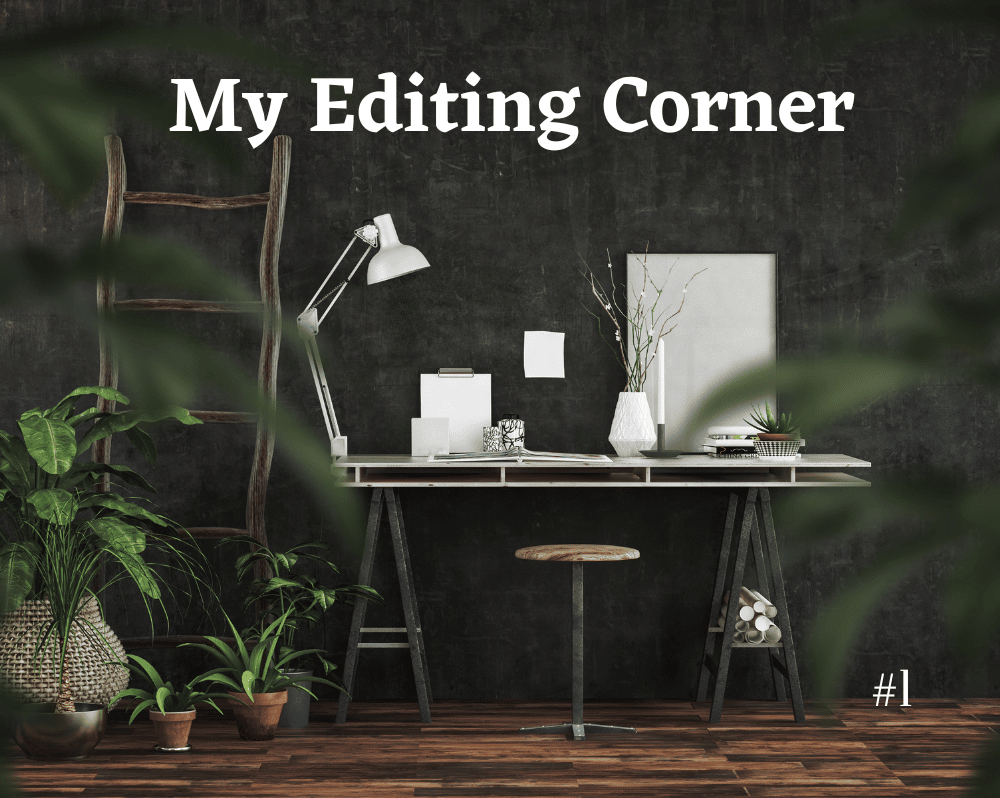

“Welcome to my little editing corner! I’ve been given all kinds of fun things to use here and I wanted to share it with you. Oh, yes, please take a seat. These elements? Oh, those are for back matter. Sure, we can talk about those today!”
What is back matter?
It is the content that comes after your story. When a reader finishes your story, they unconsciously ask, “What’s next?” Back matter is your answer.
It’s space to connect readers to yourself, get readers excited for what’s next, give them a little more story to read, or explain more of the story they just read.
There are all kinds of back matter elements you can incorporate:
Do I need back matter?
Not necessarily. It isn’t required, but it is most often expected. It’s kind of awkward for the end to be followed by blank pages, don’t you think? It’s like you fell off the face of the pages! Of course, if you don’t want to use back matter, you don’t have to.
“Sounds cool! Wait, does anyone actually read back matter?”
Yup! If you structure it correctly, the readers won’t be able to help themselves. (We’ll talk about that in a moment.)
What elements are right for me?
Good question. We have all these awesome elements to engage our readers after the story is finished, but which ones should we use?
Hmm. I think you can narrow it down pretty quickly by asking yourself simple questions.
Do you have a sneak peek ready? If so, share it. If not, don’t share one. No one will hold it against you.
Have you written other books? If so, definitely tell them! If not, you won’t need a page for that.
Are you writing another book, but not sure if you’ll publish it? Announce it anyway! Readers are fairly forgiving people. They would rather look forward to what may come than never know the book existed.
How important is a glossary of words? Well, if you have exotic or made-up names in your book, be sure to add a glossary. It’ll cut down on enunciation confusion, so the reader can enjoy the exotic names. Otherwise, exclude it.
Do you have something you want to tell the readers – something you don’t want them to miss about your story? Tell them in the author’s note. If you can’t think of anything to else say, don’t say anything at all. No biggie! You already told them a whole story!
Author bio? Always yes! Readers may love a story for itself at first, but the reason they keep coming back is because they’re connected to the author.
How can I make it engaging?
First, order the content from highest value to lowest value.
Here’s my personal opinion on the value order and why. (I used every element, so, if you ever use it one day, you’ll know where it may fit best.)
(If you don’t use one of the elements, simply move the elements below up in the rankings. So, if you don’t use #1, then #2 becomes #1. If you don’t use #4, then #5 becomes #4.
You’re smart. You’ve got the idea.)
Second, be transparent in your author note and bio.
We all want to appear a certain way, but readers love it when authors are honest with them. “I’m still growing as a writer,” or “I know what it’s like to be overwhelmed with the publication process,” or “My chronic illness affects how much I write.” All these statements reveal that you’re a normal person, like the reader.
After that, take your transparency to the next level and invite readers to know you even more. “I’d love to have you along for my writing journey,” or “In my newsletter, I talk about the things I did to rise above overwhelm,” or “On my blog, I share the story of how I wrote and published with a chronic illness.”
Find connections with your readers by being transparent and inviting them to learn even more about you by following you around.
A couple practical tips:
Write your author bio from 1st person, so they feel like you’re talking to them.
In your author’s note, talk about how life’s experiences shaped this story.
Okay, I’m sure you’ve got this. We’ll move on!
Third, give the readers something to do with you. They need more than to follow your story. Readers need opportunities to give and receive.
Are you doing special discounts on books or giveaways?
Will you offer to answer their questions about writing, publishing, or another hobby you have?
Will they have a chance to read the next book before others and give a review?
Will they get to see news like book cover releases first?
Will you allow them to write a guest blog about their interest in writing or storytelling?
Do you have a way for them to connect with other readers and writers?
Will you share other books they can read besides yours?
Whatever you do that gives your readers chances to give and receive, let them know about some of those opportunities through your author bio!
Order the content from highest to lowest value, be transparent in your author bio and note, and give readers something to do with you. These 3 things are sure to engage yours readers. Other authors have used these methods repeatedly and found success in them.
“Time to go? Yes, I see. Aw, I’m so glad you came and joined me today! Shall we do this again some time?”